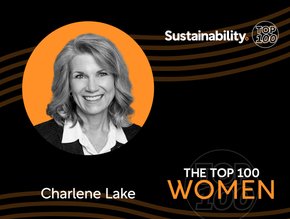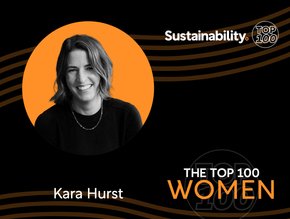5 minutes with Falk Rieker, Global Head of Banking at SAP

What does SAP offer that can help reduce the carbon footprint of banks?
Putting it from a software vendor perspective who works with banks, when you are at the prerequisite for accurate pricing for a loan, it is all about data – you need to have as much data about your customers as possible. Depending on whether you have a large public enterprise or a smaller company that may be private, you have different levels of information available. Therefore, with large enterprises, you can take more factors into account and come up with more competitive pricing, because you have more information, more visibility, and you can gauge your risk much more accurately than you can with smaller organisations.
When it comes to the topic of green loans, it's ultimately the same thing. You need to understand the business the customers are in, as well as their supply chain. The more transparency you have on that, the better you can come up with compelling offerings around green loans. So that’s a surprising aspect. Then the next thing is when you give the loan for larger projects, you need to have governance and compliance as well see the monies used in the way it was originally declared. So there has to be constant follow-up and transparency. Data, provided by SAP’s products, allows for this.
How can your services improve the banks’ ESG ratings specifically?
We have multiple use cases and we probably don’t have enough time to go through all of them. Let’s talk about the bank itself, and how they can improve its ESG rating. First of all, we provide a solution for holistic steering and reporting called the sustainability control tower, which enables you to collect and transform all the data you need for your ESG reporting; that can come from SAP systems as well as non-SAP systems. So that’s the first thing.
The other thing is we obviously have a lot of data for systems around procurement, supplier management, real estate, HR, and even travel and expenses. These contain a lot of information that is relevant for ESG reporting and, in turn, relevant for sustainability. We can take this data and put it into our sustainability control tower reporting tool (or any other reporting tool the bank might use). So if the bank is making use out of our reporting, they can pull the data straight from the control tower and use it for ESG reporting. And what’s great is that the more you use, the more you benefit because you have a bigger dataset available, making it easier for you.
So the customer wanting to invest in ESG products benefits, the banks benefit. Are there any drawbacks or limitations in using these tools or in implementing them?
With ESG being all the hype at the moment, we need to be careful that there is no kind of greenwashing going on. The systems will deliver you the results together as an input, but we need to keep a close eye on the data itself, one the quality of it. To take an example: let’s say there’s an oil and gas company that is also the greenest company in the world. If that happens you know that something with the data may not be right. The downside is that everyone stretches the ESG rules to their own advantage at the moment, wanting to get to the highest ESG standard as possible. It’s good that people think green, but we need to make sure the data stays reasonable.
With products such as these that SAP offers, why isn’t every bank jumping on the bandwagon?
Absolutely. I wish I could say that every bank is jumping on the standard software train, but you know banks – and traditionally larger banks – have strong in-house development teams that produce a lot of the solutions themselves. But what I see in the next step is that they will replace some of their homegrown solutions with our standard solutions over time. It’s good for the industry to have more of a standardised approach. You see, the real challenge over time will be maintaining all of this sustainability framework. That is where we at SAP can help.
Visit Falk Rieker's Linkedin here.






